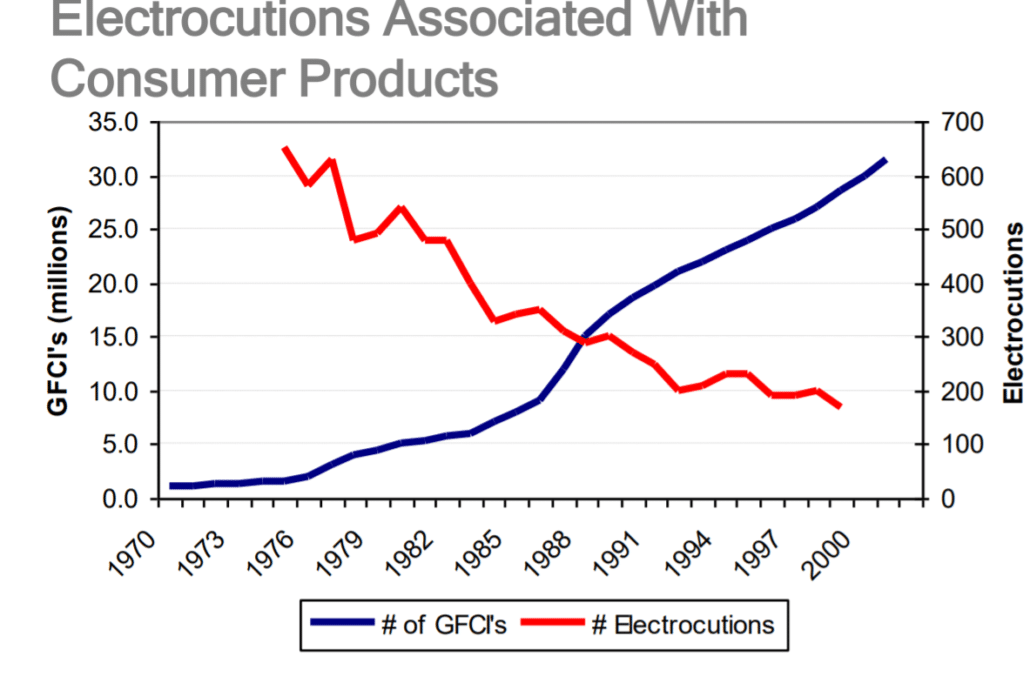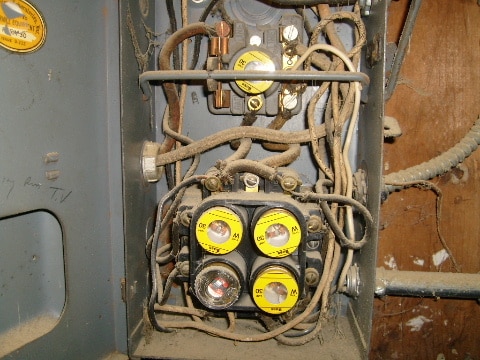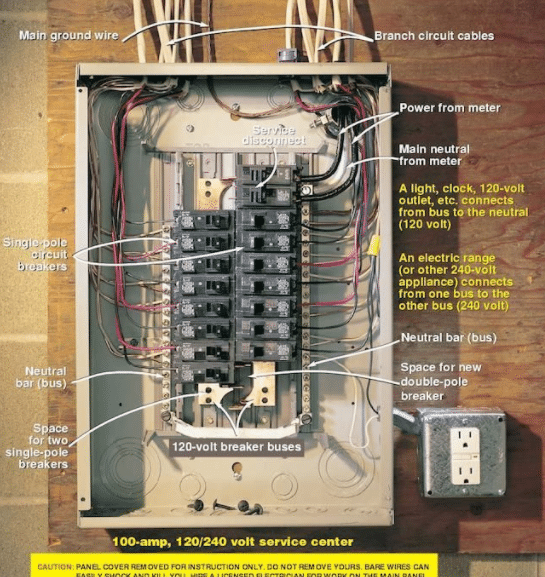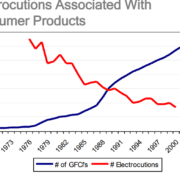Purpose and History of Electrical Service Panels; Deaths and Injury Due to Electrical Fires and Accidents
What Does an Electrical Service Panel Do?
The purpose of an electrical service panel is to SAFELY distribute power from some source (most likely your local power provider) to different areas of the home. Branch circuits, which feed the outlets and switches in specific rooms/areas of the home or individual appliances, are responsible for getting an appropriate amount of power to the device (such as a switch or receptacle) or appliance (such as a refrigerator or dishwasher). Fuses and circuit breakers protect the wire, devices and appliances – and occasionally even people – on a circuit from damage or injury. This can happen when devices overdraw current as a result of overloading a circuit, a faulty device/appliance, a short in the circuit (leaking current to ground), or improper use.
How Many People Are Killed or Injured in Electrical Accidents Each Year?
This is not something I was planning to discuss, but in putting together this blog I was very surprised to learn of the number of people who still are injured or die from in-home electrocutions and electrical fires each year. According to the Electrical Safety Foundation International (ESFI), 900 people lose their lives each year. Almost 500 die as a result of an average 51,000 electrical home fires and 400 people are electrocuted.* Another 1,400 people are injured. Annual property damage averages $1.3 billion.
These are stunning numbers and I will devote some time in future blogs on electrical safety and discuss how some simple and inexpensive steps can be taken to prevent injury and death. For now, one simple tip: 65% of home fire deaths result from no working smoke detectors. PLEASE, PLEASE install smoke detectors (follow manufacturers’ instructions for testing your detectors).
While the number of deaths by in-home electrocution is still way too high, that number has come down significantly in the last 40 years as a result of improvements in electrical safety devices. One example is GFCIs which I discussed in an earlier blog. Below is a graphic showing the reduction in the number of electrocutions per year as the number of GFCI installations has risen:

Another simple safety tip: test your GFCIs on a monthly basis. I will devote a whole blog entry to this in the near future.
History of the Electrical Panel
From the early 1900s to the 1950s, the most common service supplied 120-volts, and 30-amps to the home. The panels used plug fuses to protect circuits and a knife-blade switch to disconnect power to the whole panel. You may click here to review how a plug fuse protects a circuit in my earlier blog post. A 30-amp service is far from adequate for powering today’s electrical loads which support many appliances, computers, electronics, lighting and other devices.
During the 1950s and early 1960s, the most common service panel installations provided 60-amp fuse panels with one 240-volt feed. These services used plug fuses and were limited in the number of branch circuits they could support. For example, a 60-amp service usually served four branch circuits. Branch circuits of a 60-amp service distribute power in 15-amp or 20-amp loads with each branch circuit used for a specific room or area of the home, or a specific load such as a range or refrigerator (these latter are called dedicated branch circuits). It is not feasible to add branch circuits to a 60-amp fuse panel. It is important to note that 60-amp fuse boxes are between 50 and 70 years of age. Since the typical serviceable lifespan for a fuse box is approximately 50 years, almost all of these services have reached, or are beyond, their serviceable life.
In the mid-1960s, circuit breaker panels became the norm and are still in use today. In my last blog, I noted the benefits of circuit breakers over fuses. Both are effective overcurrent protection devices, but circuit breakers have the distinct advantage of being able to reset after they are tripped while a fuse must be replaced. Benefits of circuit breakers also include:
- More safely incorporating both 120- and 240-volt circuits
- Allowing additional circuits to be added
For many years, a typical circuit breaker panel had 100-amp service. Newer homes may have circuit breaker panels with 200-amp services which can support more branch circuits and provide twice the electrical capacity of a 100-amp service.
Knowing a bit about the history of electrical service panels will be useful in my next blog when I talk about when to consider a proactive upgrade from a fuse panel to a circuit breaker panel.
* http://www.esfi.org/home-safety
The History of Electrical Panels in Pictures
Years 1900 – 1950

30-Amp Fuse Box
Years 1950 – Mid 1960s

60-Amp Fuse Box
Early to Mid 1960s to Today

100-Amp Circuit Breaker Panel
May Be Installed Today Based on Load Calculation

200-Amp Circuit Breaker Panel



Leave a Reply
Want to join the discussion?Feel free to contribute!